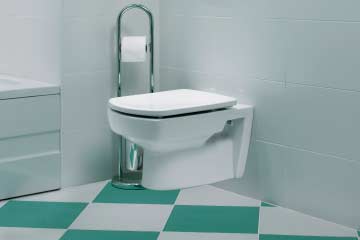A Triac Dimmer is a type of dimmer switch that uses a triac to control the amount of power that is sent to a light bulb. Triacs are electronic components that can act as both a switch and a variable resistor. This makes them ideal for dimming light bulbs, as they can smoothly transition between fully on and fully off.
Table of contents
- What Is A Triac Dimmer
- What Does TRIAC Mean
- How TRIAC Dimmer Switches Work
- What Are The Three Types Of Dimmers?
- TRIAC LED Control System And Its Wiring
- Advantages of TRIAC dimmers in LEDs:
- Disadvantages of TRIAC dimmers in LEDs:
- Alternative smart switches that are also TRIAC dimmers:
- Is Lutron a TRIAC dimmer?
- Is TRIAC Dimming The Same As Leading-Edge?
- Conclusion
- FAQs
What Is A Triac Dimmer
A Triac Dimmer is a type of dimmer switch that uses a triac to control the amount of power that is sent to a light bulb. Triacs are electronic components that can act as both a switch and a variable resistor. This makes them ideal for dimming light bulbs, as they can smoothly transition between fully on and fully off.
Triac dimmers are the most common type of dimmer switch in use today. They are relatively inexpensive and easy to install. However, they can cause some problems with certain types of light bulbs, such as fluorescent bulbs and some LED bulbs.
What Does TRIAC Mean
TRIAC stands for Triode for Alternating Current. It is a type of electronic component that can act as both a switch and a variable resistor. TRIACs are used in a variety of applications, including dimmer switches, motor controllers, and power supplies.
TRIACs are made up of three layers of semiconductor material. The middle layer is called the gate. The gate controls the flow of current between the other two layers.
When a small voltage is applied to the gate, the TRIAC will turn on and allow current to flow between the other two layers. The amount of current that flows is determined by the voltage that is applied to the gate.
TRIACs are very versatile components that can be used in a variety of applications. They are relatively inexpensive and easy to use, making them a popular choice for many electronic circuits.
Related Post: Top 30 inspirational commercials that sold out their products
How TRIAC Dimmer Switches Work
TRIAC dimmers are the most common type of dimmer switch used in homes today. They are used to control the brightness of incandescent, halogen, and some LED light bulbs.
TRIAC dimmers work by chopping off a portion of the AC waveform that is supplied to the light bulb. This causes the light bulb to glow dimmer or brighter, depending on how much of the waveform is chopped off.
TRIAC dimmers are relatively inexpensive and easy to install. They are also very reliable and can be used to control a wide range of light bulbs. However, TRIAC dimmers can cause some flickering and buzzing, especially when used with certain types of LED light bulbs.
Related Post: Denim Insulation vs. Fiberglass Insulation | How Denim Insulation Works
What Are The Three Types Of Dimmers?
There are three main types of dimmers:
TRIAC dimmers: TRIAC dimmers are the most common type of dimmer switch. They are used to control the brightness of incandescent, halogen, and some LED light bulbs.
Pulse-width modulation (PWM) dimmers: PWM dimmers are a more advanced type of dimmer switch that is often used with LED light bulbs.
PWM dimmers work by turning the light bulb on and off very quickly, with the on time being proportional to the desired brightness level.
0-10V dimmers: 0-10V dimmers are a type of dimmer switch that is often used in commercial and industrial applications. 0-10V dimmers work by sending a voltage signal to the light fixture that controls the brightness level.
TRIAC LED Control System And Its Wiring
A TRIAC LED control system is a type of dimmer switch that is specifically designed for use with LED light bulbs. TRIAC LED control systems are similar to TRIAC dimmers, but they have some additional features that make them more compatible with LED light bulbs.
TRIAC LED control systems typically have a built-in flicker suppression circuit that helps to eliminate flickering and buzzing. They also have a wider dimming range than TRIAC dimmers, which means that they can be used to dim LED light bulbs to a very low level.
The wiring for a TRIAC LED control system is similar to the wiring for a TRIAC dimmer. The main difference is that the TRIAC LED control system must be connected to a LED driver.
The LED driver is a device that converts the AC power from the outlet to DC power that can be used by the LED light bulbs.
To wire a TRIAC LED control system, you will need the following:
- A TRIAC LED control system
- A LED driver
- An LED light bulb
- Wire nuts
- Wire strippers
Here are the steps on how to wire a TRIAC LED control system:
- Turn off the power to the circuit at the breaker panel.
- Connect the hot wire from the outlet to the input terminal of the LED driver.
- Connect the neutral wire from the outlet to the neutral terminal of the LED driver.
- Connect the output wires from the LED driver to the input terminals of the TRIAC LED control system.
- Connect the output wires from the TRIAC LED control system to the LED light bulb.
- Secure all of the connections with wire nuts.
- Turn on the power to the circuit at the breaker panel.
Related Post: How Sump Pumps Work | Full Guide and Details
Advantages of TRIAC dimmers in LEDs:
TRIAC dimmers are relatively inexpensive and are compatible with most existing incandescent and halogen dimmers.
TRIAC dimmers can be used with a wide range of LED loads, including retrofit bulbs, strips, and fixtures.
TRIAC dimmers are generally reliable and have a long lifespan.
Disadvantages of TRIAC dimmers in LEDs:
TRIAC dimmers can cause flickering or buzzing in some LED lights, especially at lower dimming levels.
TRIAC dimmers can be less compatible with some newer LED technologies, such as high-efficiency LEDs.
TRIAC dimmers may not provide as smooth or consistent dimming performance as other types of dimmers, such as 0-10V or DALI dimmers.
Alternative smart switches that are also TRIAC dimmers:
Related Post: Wake Robin: All You Need To Know About The Plants
Lutron Maestro: The Lutron Maestro is a popular choice for smart TRIAC dimmers. It is compatible with a wide range of LED loads and offers a variety of features, such as preset dimming levels, ramp rates, and nightlight functionality.
Leviton Decora Smart: The Leviton Decora Smart is another popular choice for smart TRIAC dimmers. It is compatible with a wide range of LED loads and offers a variety of features, such as voice control, scheduling, and remote access.
Is Lutron a TRIAC dimmer?
Lutron offers a variety of dimmer types, including TRIAC, 0-10V, and DALI dimmers. The type of dimmer that you need will depend on the specific LED load that you are using.
Related Post: How to Get Rust Off Stainless Steel
Is TRIAC Dimming The Same As Leading-Edge?
Yes, TRIAC dimming and leading-edge dimming are essentially the same thing. They both refer to a dimming method that uses a TRIAC (triode for alternating current) semiconductor to control the power delivered to a light source.
The TRIAC acts as a variable switch, allowing more or less current to flow through it depending on the dimmer’s setting.
In leading-edge dimming, the TRIAC is turned on at the start of each half cycle of the AC waveform, and it remains on for a controlled duration determined by the dimmer setting. This means that the light receives a portion of the full AC waveform, resulting in a dimming effect.
TRIAC dimming is a widely used dimming method for incandescent, halogen, and fluorescent lamps. It is also compatible with most LED bulbs, although certain types of LEDs may experience some flicker or other issues with TRIAC dimming.
Conclusion
Overall, TRIAC dimming is a good choice for dimming incandescent and halogen lamps. However, if you are dimming LED lamps, you may need to use a different type of dimmer, such as a PWM dimmer.
Related Post: How to Clean a DVD | Full Guide
FAQs
PWM dimming is a type of digital dimming that works by rapidly switching the power to the load on and off.
Some LED lamps are compatible with TRIAC dimming, but others are not
TRIAC dimming is relatively efficient, inexpensive, and compatible with a wide range of lamps.
References
- ledstore.pro/triac-dimming
- home.howstuffworks.com/dimmer-switch
- rclite.com/what-is-a-triac-dimmer-a-beginners-guide/
- electrouniversity.com/what-is-a-triac-dimmer/





